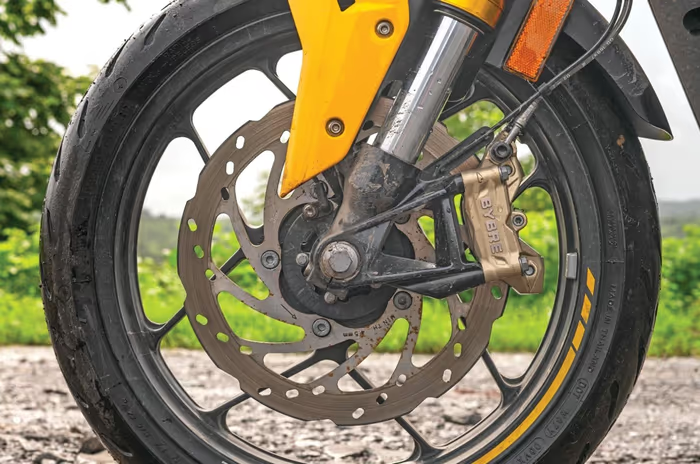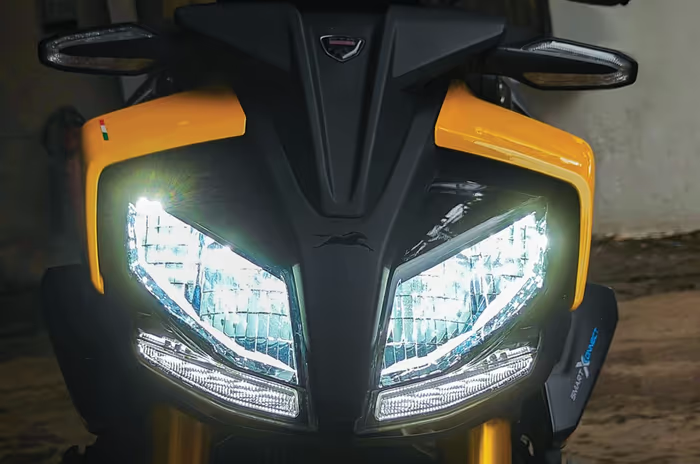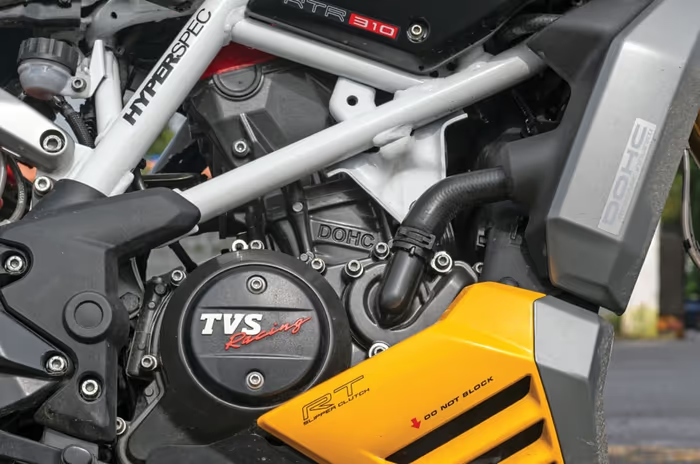The TVS Apache RTR 310 isn’t just a naked version of the RR 310—it’s a bold step forward in TVS’s performance lineup. With an aggressive design, extensive feature set, and impressive mechanical upgrades, the RTR 310 attempts to strike a balance between thrilling performance and everyday usability. But does it succeed in every area? Let’s break down why the Apache RTR 310 deserves your attention—and where it slightly misses the mark.
Built for Both Daily Duty and Weekend Thrills
One of the most compelling aspects of the Apache RTR 310 is its dual nature. It offers a riding experience that’s comfortable enough for city commutes yet responsive and engaging on twisty roads. TVS has nailed the ergonomics with a rider-friendly triangle that doesn’t force an aggressive crouch, making the bike surprisingly practical for daily riding, errands, or even long city hauls.
At the same time, performance hasn’t been compromised. A key difference from its faired sibling, the RR 310, is the dramatically shorter gearing. TVS achieves this by using a rear sprocket that is four teeth larger, giving the RTR 310 snappy acceleration. In fact, its 0-100 km/h time is marginally quicker than the more powerful Triumph Speed 400—an impressive feat in this segment. Combine that with a well-damped, non-adjustable suspension that soaks up everyday road imperfections, and you get a bike that feels equally at home on congested urban streets and weekend mountain roads.
Best-in-Class Tyres and Brakes
In terms of component quality, the RTR 310 punches well above its weight. One of its standout features is its braking setup, which offers excellent stopping power and lever feedback—arguably one of the best in the sub-500cc naked bike class.

Complementing the strong brakes are Michelin Road 5 tyres, which come as standard. These tyres offer remarkable grip in both dry and wet conditions, giving riders the confidence to push the bike a little harder, even when the road surface isn’t perfect. This combination of sticky rubber and dependable brakes ensures that the RTR 310 remains composed and predictable, especially in challenging traffic or on poorly surfaced roads.
Feature-Rich and Visually Striking
Where the Apache RTR 310 really makes a bold statement is in its styling and equipment list. Even the base variant comes loaded with high-end features typically found on larger, more expensive machines. Standard kit includes multiple riding modes, switchable ABS, traction control, cruise control, and an adaptive LED headlight.

For those who want more, TVS offers several optional packages. You can add a bi-directional quickshifter, a heated and cooled seat, adjustable suspension, tyre pressure monitoring system, and even a premium brass-coated chain. This level of customization and sophistication is unmatched in the segment and makes the RTR 310 stand out from the crowd.
Visually, the bike also delivers. Its aggressive streetfighter stance, sharp lines, and muscular tank give it serious road presence. The optional Sepang Blue color scheme is particularly eye-catching and adds to the overall premium appeal of the bike.
But It’s Not All Perfect…
Despite its strengths, there are two significant drawbacks that potential buyers need to consider before signing on the dotted line.
Premium Price Tag for Top-End Variants
While the base variant offers excellent value, the price escalates quickly once you start adding optional features. The quickshifter alone is an additional Rs 17,000. The Dynamic Kit, which includes adjustable suspension, tyre pressure monitoring system, and the brass-coated chain, adds another Rs 18,000. Then there’s the Dynamic Pro Kit with the climatically controlled seat and IMU-assisted rider aids, which costs Rs 22,000. Throw in the Sepang Blue colorway for another Rs 10,000, and you’re looking at a fully loaded RTR 310 that crosses the Rs 3 lakh mark.
At this point, the RTR 310 starts to overlap with the KTM 390 Duke, which boasts a more refined engine, lighter chassis, and a more premium badge. For buyers focused strictly on performance and long-term value, the price premium may be hard to justify.
Engine Refinement Still a Concern

The other issue is engine refinement. When it first launched in 2023, the RTR 310 was criticized for its coarse engine and occasional stalling issues. TVS addressed this with incremental updates, and while there has been some improvement, the engine still isn’t as smooth or polished as many of its rivals.
In stop-and-go traffic or at low revs, the engine can feel a bit buzzy and less refined. Compared to the buttery-smooth powerplants offered by competitors like KTM or even Honda, the RTR 310’s motor leaves room for improvement. For riders prioritizing refinement and smooth throttle response, this could be a deal-breaker.
Final Verdict
The Apache RTR 310 is a compelling offering in the sporty naked bike segment. It combines aggressive styling, a strong feature set, and engaging performance, making it a great choice for riders looking for a do-it-all machine. Its value proposition is strongest in the base or mid-spec trims, where it undercuts the competition while offering class-leading tech.
However, once fully loaded, its pricing overlaps with bikes that offer more polished powertrains and arguably stronger brand cachet. Additionally, engine refinement is still not where it should be, considering how far the rest of the package has come.
If you’re looking for a well-equipped, aggressive, and versatile naked bike—and don’t mind a few rough edges—the Apache RTR 310 deserves a serious look. Just be sure to weigh the top-end pricing and refinement concerns against its otherwise impressive capabilities.
